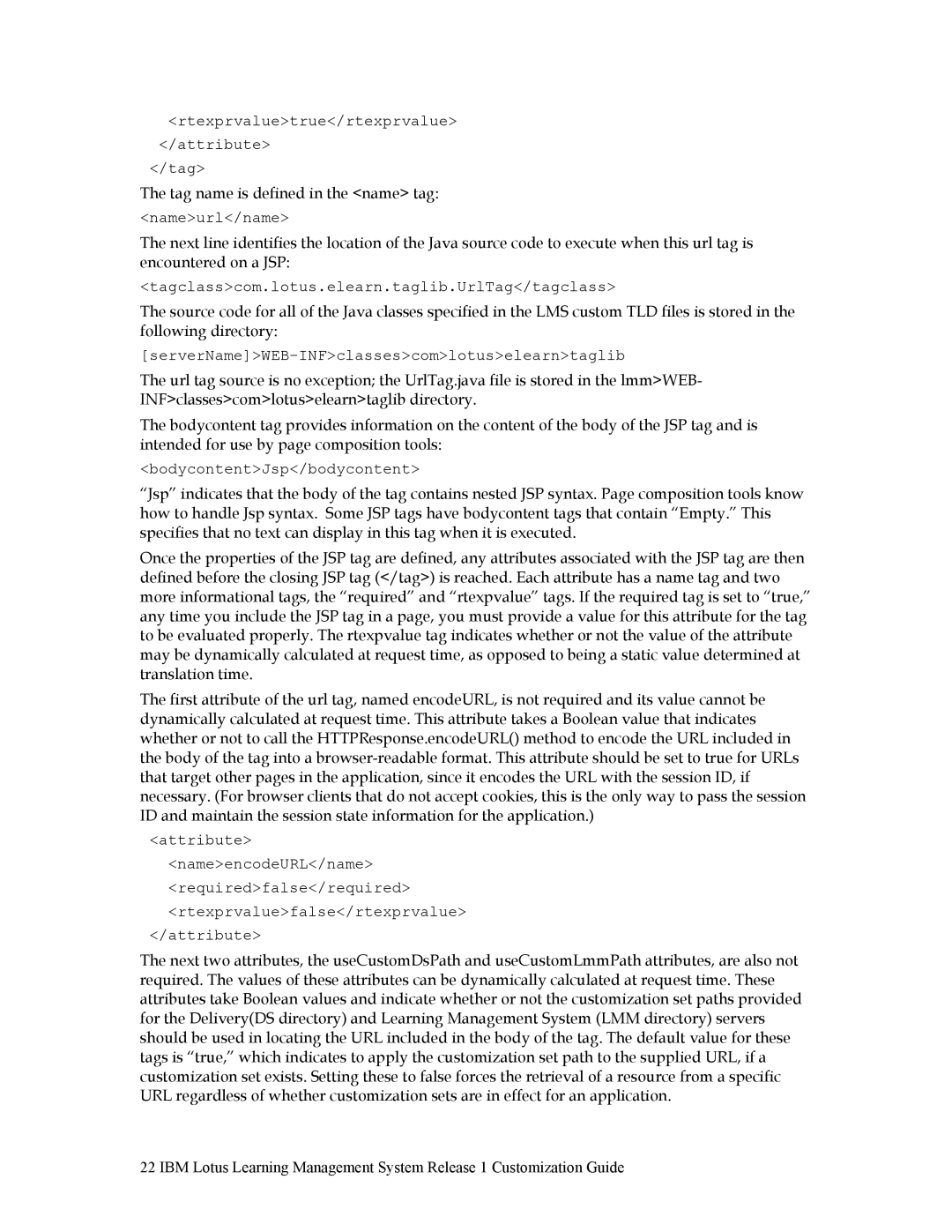<rtexprvalue>true</rtexprvalue>
</attribute>
</tag>
The tag name is defined in the <name> tag:
<name>url</name>
The next line identifies the location of the Java source code to execute when this url tag is encountered on a JSP:
<tagclass>com.lotus.elearn.taglib.UrlTag</tagclass>
The source code for all of the Java classes specified in the LMS custom TLD files is stored in the following directory:
[serverName]>WEB-INF>classes>com>lotus>elearn>taglib
The url tag source is no exception; the UrlTag.java file is stored in the lmm>WEB- INF>classes>com>lotus>elearn>taglib directory.
The bodycontent tag provides information on the content of the body of the JSP tag and is intended for use by page composition tools:
<bodycontent>Jsp</bodycontent>
“Jsp” indicates that the body of the tag contains nested JSP syntax. Page composition tools know how to handle Jsp syntax. Some JSP tags have bodycontent tags that contain “Empty.” This specifies that no text can display in this tag when it is executed.
Once the properties of the JSP tag are defined, any attributes associated with the JSP tag are then defined before the closing JSP tag (</tag>) is reached. Each attribute has a name tag and two more informational tags, the “required” and “rtexpvalue” tags. If the required tag is set to “true,” any time you include the JSP tag in a page, you must provide a value for this attribute for the tag to be evaluated properly. The rtexpvalue tag indicates whether or not the value of the attribute may be dynamically calculated at request time, as opposed to being a static value determined at translation time.
The first attribute of the url tag, named encodeURL, is not required and its value cannot be dynamically calculated at request time. This attribute takes a Boolean value that indicates whether or not to call the HTTPResponse.encodeURL() method to encode the URL included in the body of the tag into a
<attribute>
<name>encodeURL</name>
<required>false</required>
<rtexprvalue>false</rtexprvalue>
</attribute>
The next two attributes, the useCustomDsPath and useCustomLmmPath attributes, are also not required. The values of these attributes can be dynamically calculated at request time. These attributes take Boolean values and indicate whether or not the customization set paths provided for the Delivery(DS directory) and Learning Management System (LMM directory) servers should be used in locating the URL included in the body of the tag. The default value for these tags is “true,” which indicates to apply the customization set path to the supplied URL, if a customization set exists. Setting these to false forces the retrieval of a resource from a specific URL regardless of whether customization sets are in effect for an application.
22 IBM Lotus Learning Management System Release 1 Customization Guide
